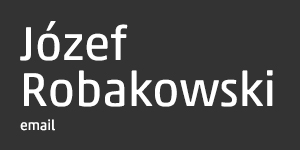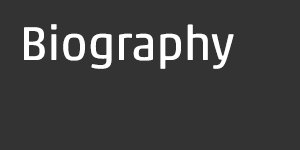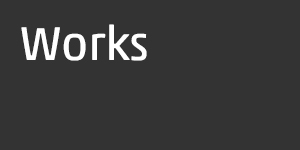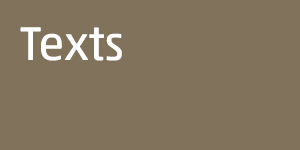Personal
The identity of art - the identity of the artis, About the Work of Józef Robakowski. Ryszard W. Kluszczynski
Art Magazine no. 11 (3/96)
To give to the world of electronic machines the sense of authorial activities. To take away from these tools their objective ability to describe reality, but not through technical means, but by branding their possibilities - with human problems.
Jozef Robakowski, Art is power, 1985
Introduction
Jozef Robakowski's creativity has lasted almost forty years. Much has changed in art in that time, and much has changed in Robakowski's work as well. Whereas, however, in world art we have observed a series of violent transformations taking place first of all in the very bosom of the avant-garde, and later when the avant-garde all around the world was severely criticised, extending to the area of art generally, culminating in a total negation of modernism, including both its emancipating ethos and particular strategies, Robakowski's work has evolved quietly without any dramatic shocks or breakthroughs. At the same time, throughout the whole of this period, at every moment, it has remained in a clearly marked contact both with its own sources and with the present. Personal, singular, and at the same time in the centre of events, it has filled a position which would have seemed impossible to achieve.
The particular position occupied by Robakowski's art is there thanks to the attitude he has adopted towards the world, towards art and its institutions, towards the social roles offered to artists, and towards himself. This attitude, on the one hand, is characterised by intransigence. For Robakowski art is a synonym for freedom. In accordance with this imperative he sent a letter in 1975 to the then minister of culture informing him that he was "giving up any further co-operation with the Polish Film Industry". This imperative made him make on many occasions, particularly often while the Film Form Workshop was active, and together with other participants, various attempts at intervention, disturbing the accepted order, and aiming to demask other artists or others in the art world whom he suspected of a lack of authenticity in their creative work. On the other hand, however, Robakowski's attitude is also marked by irony, distance, the consciousness of taking part in a game. He himself describes this as "manipulation", It is this very antinomic union between the "fluctuating" distance towards others and himself, questioning artistic conventions and his own choices, and the uncompromising and avant-garde sense of mission, the reliability of knowledge and his own ability, that has built the character of Robakowski's art, Speaking in an old-fashioned way, it has created its soul. The decision about the choice of media, however, (initially photography and film, later complemented by electronic means of expression) as the main tools of his creative work, the decision delineating the areas of his artistic search, has given substance to the soul. Together they create a phenomenon whose parts mutually refer to one another creating a complex structure of signals, negations, tensions, energy transmissions. Robakowski's work has to be seen as a particular whole, a multi-media expression, a multi-element work of art many years in the making, within whose framework the artist, crossing various boundaries, breaking numerous taboos, has approached an ever fuller and deeper consciousness of what art means to him and what it means to be an artist. Selfconsciousness together with understanding and acceptance of his own identity are the fundamental properties of Robakowski's artistic attitude.
Art as a search for identity
Józef Robakowski belongs to the first generation of Polish artists to use the video camera in their work. In his case the road to the new medium wound its way through the cinema, or more accurately through the art of a mechanically created picture. A photographer and a filmmaker, he began his artistic activity in the 1960s. He was the co-founder of the most important formation in the history of avant-garde film in Poland - the Film Form Workshop - and made his first video in 1974. From the very beginning his video-realisations have remained in the realms of the constructivist tradition. It is from this that the economy of expression, the rationalism of construction and the care for material, so characteristic of Robakowski's work, come. This is the first context that we have to remember when we interpret the works of this artist.
The constructivist tradition combined in Robakowski's work with the conceptual (analytical) attitude characteristic of the avant-garde art of this period. From this in turn evolved the interest in the essence of art, the discarding of narration in favour of analysis of the medium. Metaartistic explorations became in this case an extension of the earlier interests of the artist, who had after all history of art studies behind him. This is the second context. And finally, as I have already mentioned, the imperative of independence - the basic feature of Robakowski's creative (and also existential) attitude, defining both his artistic practice and the criteria according to which he builds his vision of the history of art and the hierarchy of the artists whom he considers as his forebears. The freedom apparent in the discarding of petrifying norms and conventions, in the ability to find one's own road and to defend one's choices, in the force of one's effect on one's surroundings, distinguishes to the same degree his own creativity and that of the artists he regards as being close to him and whose works he forms into a context for his own work. This is the third frame of reference. The issues gathered in this triple context form a common frame of interpretation which is very helpful in understanding many of Józef Robakowski's realisations. In Robakowski's work a special place is occupied by works devoted to the art of other artists. A very interesting example of this trend in Robakowski's creativity is the videorealisation Arnolvideofini (1434-1992). On the surface this is just a work about the creativity of Jan and Hubert van Eyck, fitting neatly into the "films about art" category. Its description as a "votive picture" in the author's monologue which accompanies the picture completes the cognitive character of the realisation with more personal elements; the expression of the particular respect, or even admiration, for the works of the van Eyck brothers. The Adoration of the Mystic Lamb, a fragment of the Ghent Altar, whose elements are often referred to in the Arnolvideofini discourse, meets in this way Robakowski's adoration of the works of Jan and Hubert van Eyck. This adoration is not however just an element accompanying the objective, descriptive-cognitive aspect of the work; just the opposite - it subjectivises the cognitive inspection, ordering it to perceive and bring out in relief that in the work of the 15th century masters which is close to the 20th century artist.
The visual discourse Arnolvideofini begins with often-repeated pictures of a characteristic "altar-diptych", constructed from an open book presenting in close-up the faces of Adam and Eve, another fragment of the Ghent Altar. It is not without meaning that Robakowski in an ostentatious way makes use of reproductions from books; this desacralisation of art (Walter Benjamin stated that reproductions are devoid of the aura that is characteristic of the works themselves) symbolises the way in which Robakowski reads the meaning of the van Eyck brothers' work. Jan van Eyck (Hubert is a mysterious figure; the lack of any real information about him has led researchers to suppose that it was Jan himself who painted all the works ascribed to the two brothers) is regarded by many art historians as a genius demolishing all conventions. Peter Meyer wrote that "he is one of those great figures in the history of art, who on the one hand end long cycles of tradition, and on the other anticipate in their works the imminent development. By their modernity they influence the decades ahead, the future, more than all their descendants..." It is not strange therefore that the 20th century artist was so interested in the work of the Flemish painter (the first, by the way, to sign his work), as the former equally unceremoniously deals with artistic conventions and equally decidedly emphasises the authorial character of a created work.
Robakowski highlights the secular not the sacral dimension of the van Eyck brothers' work (using reproductions also serves this aim), The private space in which he builds his "altar" suits the privacy of the interior in which the Arnolfini couple were portrayed, What is "sanctified" in Robakowski's work and, as he himself maintains, in the work of the van Eycks, is the characteristic sacrum of art liberated from transcendental duties. Robakowski builds the visual discourse of Arnolvideofini almost exclusively from pictures presenting fragments of works by the van Eyck brothers. The source of these quotations is the Ghent Altar and the Arnolfini portrait, which is clearly also the source of the title of the Robakowski realisation. And it is not without cause that this "unique masterpiece (...), the product of a totally bourgeois patronage" was honoured in this way. Robakowski frames the van Eycks" paintings in such a way that he de-composes their structure, transfers the dominant characteristics and transforms the expression and the meaning of each of them. By incorporating the almost-liberated picture-fragments into a stream of his own pictures he creates new links between them and finally a new whole, in which the accented places are occupied by quotations from the Arnolfini portrait. It is they which decide about the final significance of the whole. Robakowski makes his own those pictures which were in essence appropriated, not only (and not even above all) by sporadic interventions introducing his presentations into the world of the van Eyck brothers (pictures of his own hand accompanying others' hands, painted, or the profile of Barbara Konopka), but by building from others' and his own pictures his own private discourse. This discourse links worlds which are distant from each other by several centuries not only on the level of symbolised or revealed emotions but also on the level of an articulated message. Arnolvideofini forms a characteristic artistic dialogue with the past. In this conversation, being at the same time a confrontation of two artistic epochs, there is formed a level on which we can trace the nature of their associations, as seen through Robakowski's eyes. The 15th century and the 20th century are joined, according to him, in an attitude of a particular creative exultation, an attitude of concentration and profound treatment of a theme. Robakowski follows also, as I mentioned earlier, the secular dimension of artistic creativity and the private character of the message which arises from it. He finds all of this in the Arnolfini portrait.
The van Eyck brothers' work is interpreted in two ways in Robakowski's realisation. First of all it is shown in the context of the sensitivity of the contemporary artist. Secondly it is captured within the boundaries of the properties and possibilities of the medium used - video. At the same time, however, the interpreted work by Hubert and Jan van Eyck itself plays the role of the subject of analysis: it examines the contemporary artistic sensitivity and also tests the analytical potency of the art of video. The subject and the object of analysis are constantly changing places, since by asking about the nature of the van Eyck brothers' creativity, Robakowski is making his own art the object of reflection.
In the search for the source of his own creativity the artist goes ever deeper into the past. After defining the circle of his 20th century predecessors in the film portraits of Katarzyna Kobro, Tytus Czyżewski, Tymon Niesiołowski and Stanislaw Ignacy Witkiewicz, he now finds the deep roots of his artistic attitude in the oeuvre of Jan and Hubert van Eyck. Trying to find his fate in the historical events of the past (at the same time underlining the differences and separateness) Józef Robakowski expresses the nourished conviction that the films (as characteristically understood by him) about art (art feeding on art), making someone else's creativity his own experience, allow him to discover and more fully define his own identity.
Multiformity
The work of Józef Robakowski has often been the subject of critical interest (se for example the bibliography in the catalogue of his Vital-Video exhibition in the National Museum in Poznań, 1993). The number of publications devoted to his work is the result not only of the longevity of his artistic career (which has lasted uninterrupted since 1959), although we should not ignore the significance of the fact that he made his first experimental 16 mm film in 1962, becoming in this way the precursor of neo-avantgarde film in Poland. The attention which is paid so often by so many critics and art researchers to Robakowski's work stems above all from its variety.
This multiformity manifests itself on many levels. On the highest, the most general and the most easily noticed level it is expressed in the variety of media utilised by him in his artistic work: photography, film, video, objets d'art, pictures and installations by no means exhaust the variety of genres in the oeuvre of Robakowski. In the centre of all the artistic media linked by the artist's creative practice are three in particular: photography, film, video. The others come out of these, as the result of experiments going beyond the conventional, and yet universally ascribed to these media, boundaries. Robakowski was and is a media artist, for years fighting with the artistic and institutional establishment in Poland for the deserved place for artistic media in the area of art.
The variety of media is accompanied in Robakowski's work by the multiplicity of issues touched upon, by the constant development of thought, by new confrontations. From the multiplicity of issues in turn arises variety of forms, through which these ideas are expressed. And finally the works, numerous and varied, the external manifestation of this diversity.
I would like to emphasise this formal variety, so uncommon in an artist with clear and long-lasting links with conceptualism. Interest in the media and analysis of them are linked in his case with the realised desire to create artistic objects, artefacts. The spectral "semi-material" character of film, the ontological "fragility" of photography and the virtuality of the world of electronic media, helped Robakowski to link conceptual and formal tendencies into one artistic attitude. An analogous standpoint can be observed in most artists participating in the activities of the Film Form Workshop. The films of Wojciech Bruszewski, Ryszard Waœko, Paweł Kwiek or Kazimierz Bendkowski, apart from their undoubted auto-analytical features, were distinguished also by formal virtues, particularly visible against the background of the structural films of American or Western European artists. The tendency, characteristic of the "Workshop", for undertakings taking place in the area of various media, often leading to ephemeral forms, not registered in any material, and also activities of a decidedly playful character, unexpectedly easily fitted in with both conceptual and formal elements. This variety was in any case written into the programme of this group.
The internal complexity of Robakowski's work is magnified additionally by the processes which transform, endlessly it would seem, his works. He returns quite often to the same issues, and even to the same works, trying to express better the ideas hidden within them (and sometimes adapting the structure of the work to a new stage in his artistic consciousness). That is why Robakowski, in a typical way for many avant-garde artists coming out of the conceptual formation who are not too attached to the identity of their works and regard them as works in progress, improves, re-shapes, re-interprets, rebuilds his works completely not taking into account the efforts of the art archivists, or even playing another particularly cruel game with them. As a result of such a strategy, the works - the materialisations of his thoughts and feelings - become a kind of living organism, except that they do not possess an internal source of life, since this source is always the imagination of their author. In the rich, multiform creativity of Józef Robakowski, one can find a whole series of problems which give the works an integrated uniform character, Witkiewicz's unity in multiplicity. These subjects construct a stable frame of reference, and are linked one with another in particular works or enter into various antinomies creating in this way the characteristic world of Robakowski's art. I would like to present some of these subjects, in my opinion the most important, here.
Transgressions
From the very beginning of his artistic work Robakowski never showed much respect for artistic conventions, Taking photographs out of frames, depriving them of their formal character which was at the same time just a falsification of an irreversibly lost aura, became an important aim of the strategy of his artistic activity. Robakowski himself calls this the "disenchantment" of art, The name Zero - 61, adopted by a group of artists from Toruń (Wardak, Oczkowski, Wojczulanis, Kuchta, Robakowski, later on Różycki and Mikołajczyk, and even later Kokot and Bruszewski) bears clear testimony about their manifest desire to return to the source; by "re-discovering" the photograph these artists tried to destroy the norms which were petrifying it. Within the framework of the afore-mentioned strategy, Robakowski presented at the group's first exhibition in the "Od Nowa" Gallery Colander - "a photograph of a colander, stuck onto a thick plank with a several-inch-long nail placed in the ear of this photographic object". On another occasion Robakowski presented a photographic copy immersed in water and as a result of this process undergoing gradual destruction during the length of the exhibition. These examples show the beginning of a series of transgressions, of going beyond the current canon of photography. This process took place in many different forms. The photograph Film from 1969 by a strongly contrasting presentation of a roll of film brings these two areas of art closer to each other and reminds us of their ontological relationship. Significantly more important however was the cycle of different kinds of photo-objects: kaleidoscopes, cushions, rolls, balls, moving installations, which dragged photography away from the flat surface, made photography "tangible", brought it closer to sculpture, installation or indeed kinetic art. The position of the viewer also changed in this situation; (s)he become significantly more active than in the traditional set-up, (s)he became a partner in the game, which photography had become. The revealing of technique together with the rejection of the veritist exhibition function were also elements of this game. The last exhibition of the Zero - 61 group - Forge, 1969 - brought yet another transgression: instead of photographs, the viewer encountered objects to be photographed.
A very important moment in the process of transgressions as described above was also the use made by Robakowski in his work of other people's photographs; in this way a fundamental idea was undermined: authorship, and the sacred value of art (which photography was aspiring to be) was finally destroyed.
Cinema, and later on video, was also an area where transgressions took place. The discarding of the narrative forms of film, and sometimes even of the presentational function (Swan Lake, 1963; Test, 1971, or Exercise, 1973) was a merely introductory element. Particular films became experiments testing the media values of cinema, experiences with picture and sound, and took on the form which Gene Youngblood described as "extended cinema". An example of the latter could be the film-performance Test, presented during the Knokke-Heist festival, when Robakowski, while presenting the programme of the Film Form Workshop set up a ladder in front of the screen, climbed up it and with the help of a mirror directed in all directions the stream of light coming from the projector onto the screen. In films which were mechanical-biological experiments (I'm going, 1973; Exercise for two hands, 1976) in turn the camera was regarded as an extension of the psychological and physiological functions of the human body. In the second half of the 1970s and in the 1980s such experiments were continued through the use of video. The installation FilmVideoMachine from 1992 created a bridge between film and video, being at the same time a spatial arrangement. The recently realised videophotographs (his own technique), however, couple the media features of photography and the art of video. All of these various quoted transgressions, coming from the whole period of Robakowski's creativity, prove that this is a constant property and an extremely important feature of his art.
Media
Reflection about the nature of the media used is probably the most common feature of the artistic attitude of Robakowski and the other members of the Film Form Workshop. Obviously it was present in Robakowski's work also in the pre-Workshop period. Numerous photographic works, such as those from the cycle "Half in focus", should be assessed not only as examples of transgression, but also as attempts to diagnose photography and to recognise its most significant qualities. It was not however until the Workshop period that Robakowski's attitude became defined, and that he became fully conscious of it, and that it became clearly and forcefully externalised. A very characteristic sign of this suddenly increasing self-consciousness is the programme text from 1971 entitled Once more about "pure film". This manifesto very precisely presented the author's analytical attitude. Apart from that, however, it also revealed something more. The emphasising of the need for the "purity" of genre in film, the accenting in representational films of the elementary properties of this medium, which are so representative of this attitude, make us think about constructivism as an artistic system which co-creates, along with conceptualism, Robakowski's media thinking. Another important programme text was A language-less semiological concept of film, 1975. If the previous manifesto was above all an expression of the author's artistic attitude, then this one should be placed among the theoretical texts about film. It is interesting that Robakowski formulated a similar hypothesis on the subject of the semiological nature of the cinema to the one semiological film theoreticians (e.g. Christian Metz) had done several years earlier. Film practice in this way met pure theory.The distance between the artistic interest in film and the scientific (cognitive) - the discriminating factor in Robakowski's attitudes - was an expression of the medialism characterising the attitude of this artist. Film experiments which he undertook at that time possess an intriguing form which means that their perception is not free of aesthetic experiences - and they bring at the same time knowledge on the subject of film per se, which means in turn that they can also be watched with theoretical-cognitive interest. Video, as soon as it became one of the tools of Robakowski's work, immediately became the object of his analysis. Numerous manifestos and - above all - realisations, revealed the same artistic-cognitive attitude that had earlier been noticed in photography and film. An attitude which tells us to strive for the fullest possible recognition of the nature of the tool being used so as to be able, in harmony with it and our expectations of it, to express ourselves through it. It is only when in harmony with the medium and not in opposition to it that harmony is possible between man and the tool, a biological-mechanical symbiosis. In 1991 Robakowski wrote: "To surrender oneself to the magic mechanism of the MACHINES which allow us to transcend human imaginings. They cause, they disable, they count on your human intuition. They can, like you, be in the problem of satisfaction.
They often surprise you with their impotence and pain. Yet you naively want to believe that they will help you decipher more than you understand and feel. You trust that they are not able to make a fool of you and to cheat you, because they are with us in the human natural sense. NATURAL VIDEO - this is a way of thinking and calling about the freedom of being oneself, creative despite many surprising setbacks in life."
(Natural video).
I
Extreme subjectivity, subjectivism, is the next property of Robakowski's creative attitude. Already revealed in his combative gestures during the Toruń period, and even in the structuralist films of the Workshop, which would have seemed to be impersonal in principle. Such films as I'm going (1973), My film (1974) or Exercise for two hands (1976), prefiguring the concept formulated in 1977 of mechanical-biological recordings, clearly emphasise the links between the structure of the film and the person of its author. However only in the second half of the 1970s does subjectivity become a dominant feature in Robakowski's audio-visual creative work. The programme text My own cinema from 1981 is an unequivocal expression of this domination. There is in it a forceful postulate of authenticity, close to the link between film and the internal world as well as the life of the artist. Realised over a number of years starting from 1978, the film From my window is an excellent example of this tendency. Silent pictures recorded by a 16 mm camera from the window of the artist's flat were then shown in the presence of the author, who added his own commentary to the film. This form of presentation gave the film an extremely subjective character (comparable only with private family films) extracting and at the same time emphasising the link between the public and the artist.
Robakowski made his work even more private when he reached for the video camera. After a several-year-long phase of experiences he came to the conclusion that with video, thanks to its convenience and closeness, he had obtained a tool of an uncommon scale of intimacy. With the help of video he could lead us into the world of his own thoughts and emotions in a way not comparable with his achievements to that time in that area. Numerous works appeared in this period, for example About the fingers... (1983) or My theatre (1985), examples of a subtle opening up before the viewers of the area of privacy, examples elevated to the level of shared experiences. The monologues which on each occasion formed part of the work. spoken by the author, help to create this climate of intimacy.
In more or less the same period Robakowski created thecycle Dedications, short video works, each of which possesses its own particular addressee. In these realisations subjectivity acquires the additional dimension of concrete personal communication. It is no longer just the figure of the author, but also the person to whom the work is directed, who gives away his reality to the structure of the work. The viewer, therefore, included in this intimate dialogue, cannot react in any other way than with an equally personal commitment of his or her own perception.
Games
In 1988 Józef Robakowski published a manifesto entitled "I manipulate!", which caused a considerable stir and opposition in artistic circles. Here it is:
"The idea of "manipulation games" is in the field of art an unworthy and uncommonly shameful subject. It has generally been accepted that the true artist is an honest person, deeply experiencing his/her own being, because (s)he is born out of the suffering and great passion of his/her own experiences. This is a singular and specially predisposed curiosity, immersed in the secret of characteristic gestures. Meanwhile, I am immeasurably interested to know whether I am an artist, because I state resolutely that throughout the whole life of my art I have fed on the manipulation which has served to blur the clear personal image.
I am convinced that the artist is a kind of perfidious fraud, an ulcer in society, whose vitality is manipulation on his/her own account as an expression of self-defence against annihilation, or in other words public acceptance and recognition."
GThe game, because that is what Robakowski is really talking about, did not appear in his art or in his attitudes at the end of the 1980s. It was there almost right from the beginning. Various group activities from the Toruń period had in them both the element of provocation, and games (for example the created figure of Józef Korbiel). In a certain sense the showing of Colander was also a provocation, as well as many other presentations. Also the transgressions described earlier often had the character of games with art, with its conventions or with what the public was accustomed to. Already at that time Robakowski initiated a basic game, aiming to desacralise art. He continued this game in the "Film Form Workshop". The activities undertaken there; often intended to set in motion unpredictable processes, were a game with an undefined beginning and end and not completely formulated rules, a game open to various kinds of behaviour on the part of the "viewers", in fact assuming their active participation. Such a strategy often forced the artist to adopt camouflage, to hide himself from the public. This was not therefore the position of Tadeusz Kantor, who directed his actors on the stage. Nor was it an abdication. The artist-manipulator hid his presence, in order to manipulate more easily. From this came numerous interventions, provocations, or stagings. For Robakowski's attitude a very characteristic text was the one which accompanied his installation (video-object) Mr. Stag autoepitaph 1990-1994, in which the artist wrote: "My first epitaph was once dedicated to "Jan Gnat" (John Bone) - it was a tombstone with a painted figure of a man with an animal's shin-bone in place of his head (II multimedia exhibition run by the "Kršg" Association in the Regional Museum, Toruń, in 1967). My intention with this epitaph was to indicate the fate of a paralysed person, a corpse devoid of all artistic energy. This was a symbol of some kind of certain end, but also the herald of a new, creative, even greater strength, a transformation into a completely different possibility. Today, after almost thirty years, another epitaph appears, this time "Mr. Stag", to personify the desire to make arrogant gestures. It is supposed to settle the miserable fate of the contemporary artist as a naive fool, an arsehole, and the creator of beautiful ideas and things..." (1995).
The attitude of the player was (and is) for Robakowski an expression of the rejection of the idea of art understood as the expression of ultimate truths, moralising, the expression of a rejection of the role of the artist-magus or prophet, the inflated pose of the high priest. In its place there appeared the concept of art as a breach in the everyday routine, as the sphere of conventionality branded with an enticing suggestiveness. In this kingdom irony (and self-irony) rules, and next to it - distance, contrariness and bluster. It is not without cause that Witkacy is one of Robakowski's favourites. It was he who created this model of art in modern Polish art. Also not without cause is the fact that on the shelves in Robakowski's flat you can find books by and about Gombrowicz. The game against form is not very different from the game transcending the heavy and stifling literalness.
One must not forget the previously quoted manifesto (I manipulate!), where manipulation was presented as the one defence of the always-threatened authenticity. In this paradoxical way subjectivism and subjectivity met games and manipulation in the framework of the attitude of the author of Masochisms.
Energies
The last of the syndrome of properties, with whose help I am describing the work of Józef Robakowski, directs our attention both to the sources of its creativity and to the forms in which it expresses itself. Like other properties of his attitude, so energy has appeared in his work from the very beginning. It has adopted various forms; once it appears as the energy of transgression transforming art, breaking its conventions and petrified structures, then it reaches us in the form of the energy of light waves - the phenomenal basis of the cinema. Since 1973 and the film I'm going, there has appeared a gradual concept of energy understood as the expression of human vitality. Biological energy (mental and physiological), expressing itself through mechanical equipment regarded as an extension of the functions of the human organism, begins to dominate in Robakowski's creative work. The mechanical and electrical equipment is necessary only to externalise this vitality. It then finally transfers to the machines themselves: the vitality of humans becomes the vitality of machines. In this way subjectivity also begins to be manifested as the expression of individual energy, while artistic conventions, delaying energetic freedom, once again show their destructive nature. Because art, as Robakowski wants, grows out of the private sphere, and not out of the world of duties and rules. And that is where it finds the source of its energy.
The mutability of the forms of transmitted energy, characteristic of Robakowski's work, comes out of the changes in the system of relations between the particular properties of his artistic attitude as described above on the one hand, and the transformation to which, more slowly or quickly, the reality surrounding us is subject on the other. Art is after all - according to Robakowski - among other things an expression of the energy of a particular time. Through its nervous system it is included in the real world and reacts, earlier than anything else, to the subcutaneous processes which will shortly dominate reality. From here therefore comes the unclear feeling of disquiet, uncertainty, coming out of Robakowski's latest works, mitigated by his characteristic (self-)irony and distance. Times of breakthrough induce ambivalent feelings.
Conclusion
The properties of the artistic attitude of Józef Robakowski as isolated and described above have appeared in various forms in his creative work. Simplifying somewhat one could say that in particular periods of his activity various properties have been in the foreground. During the Toruń period transgressions dominated, while in the Workshop period it was medialism; at the end of the 1970s and beginning of the 1980s subjectivity, then in the second half of the 1980s games; at present, in the 1990s it is energy. However, for this simplified systemisation to retain its descriptive and systematising features, it must be added that in each period there also appeared, albeit in residual form, all the other features, and that the dominating property entered into various unions with all the others (in changing configurations). I consider that it is the nature of these relations that makes Robakowski's art so very intriguing, for example the union between medialism and subjectivity in the late Workshop period, or the link between subjectivity and games in the late 1980s. If we were to choose, however, from all these properties one which could be considered as a fundamental quality in the perspective of Robakowski's creative work to date, then I would choose the energy which appears constantly if in varied degrees, or the tendency towards games, growing in importance throughout the last decade. I do think, however, that the creative work of Józef Robakowski ought to be described with the help of the syndrome of features and not just one of them. The more so, as his work is still open.
